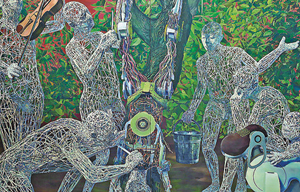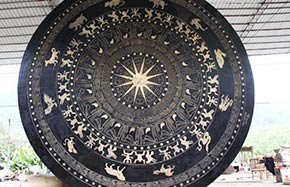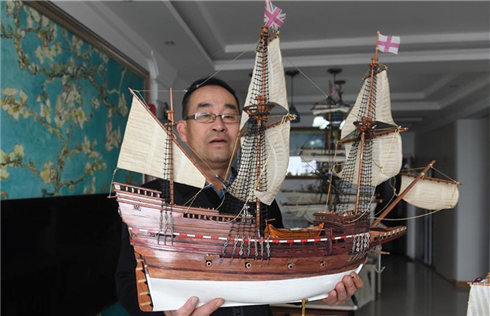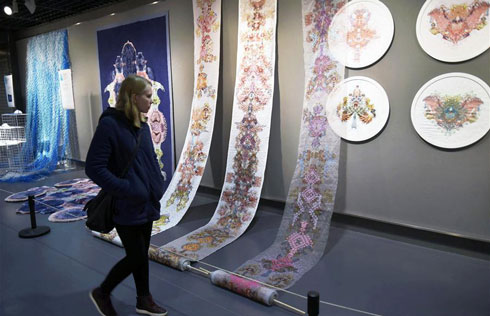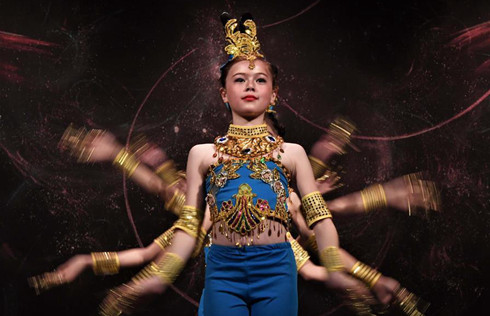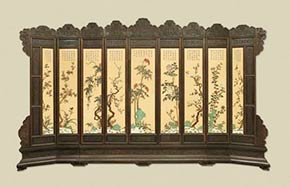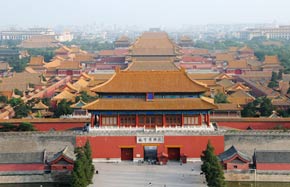Social life, lonely art
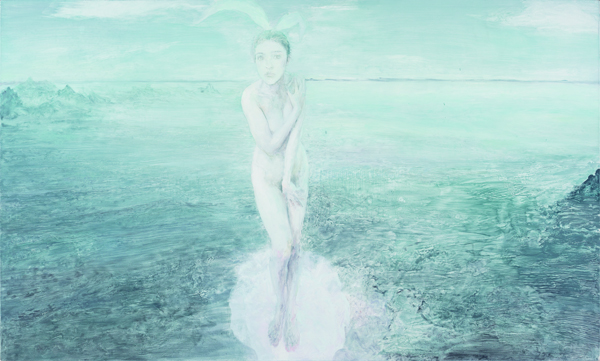 |
|
One of He Duoling's paintings. |
He explains that assuming the position would offer perks, such as higher status and auction prices for his works.
"But these would come at the cost of my leisurely lifestyle."
He usually sleeps through the morning and drives to his studio in Chengdu's suburban Blue Roof Art District in the afternoon.
Young artists frequent his studio to enjoy tea in the garden, watch art-house films projected on the wall, compete in He's badminton club or view football while sipping cold beer in the swimming pool.
He has stayed in Chengdu while many of the city's artists have moved to Beijing, so he can remain aloof from the capital's noisy art scene to focus on creation, he says.
"Beijing's artists form cliques, and daily commercial activities bombard the art districts," He says.
"Chengdu's artists can enjoy peace of mind. They're not forced to socialize too much or experience hidden strife. Different generations of artists here coexist peacefully rather than despise one another as often happens in other cities. Youth respect elders, while elders help youth."
He's 27-year-old student Zhu Keran says she appreciates that he helps up-and-coming artists without reservation.
She learned from him that "art doesn't only come from pain" but also from being outgoing as a person and unrestricted as a creator.
"He takes us to exhibitions, and introduces us to curators and dealers," says Zhu, who followed her teacher to Guangzhou.
Related:
Beautiful scars streak toward the ethereal
He Duoling is hailed as an icon of "scar painting", or "painting the wounded" - an art phenomenon that appeared in the later period of the "cultural revolution" (1966-76). It was a shift from portraying heroes to depicting ordinary people's fates. More...
| Chinese palette | Old nation's new Transfiguration |





